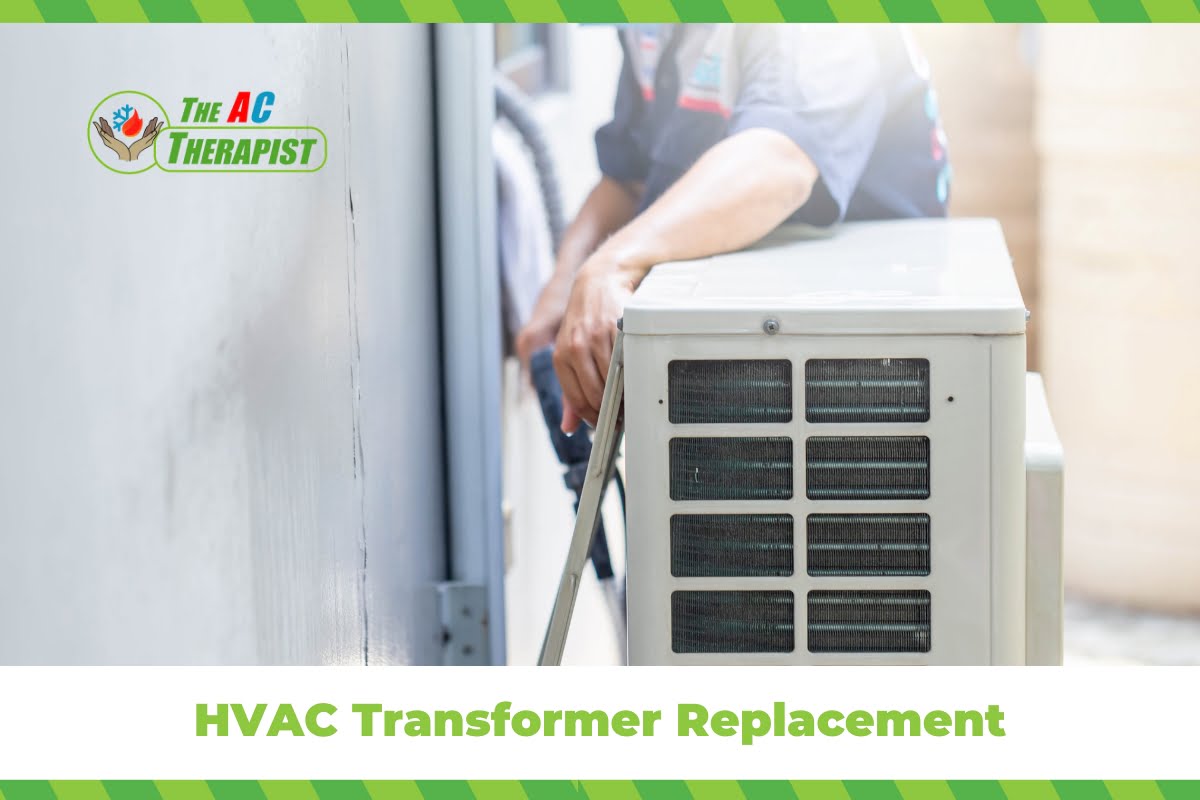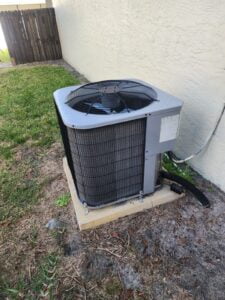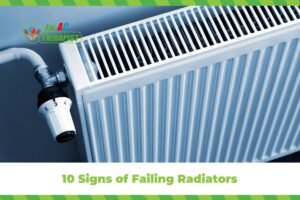HVAC Transformer Replacement
HVAC transformer replacement might not be the most glamorous topic, but it’s a crucial aspect of maintaining a comfortable and efficient home. This comprehensive guide will delve into everything you need to know about HVAC transformer replacement, from understanding its function to recognizing when it’s time for a replacement, and how to do it effectively.
Understanding HVAC Transformers
Understanding HVAC transformers is essential for anyone looking to maintain or troubleshoot their home’s heating, ventilation, and air conditioning system. This section will delve into what HVAC transformers are, their role in your HVAC system, and why they’re crucial for the efficient operation of your heating and cooling units.
What is an HVAC Transformer?
An HVAC transformer is a device in your heating and air conditioning system that steps down the voltage from the main power supply to a lower voltage suitable for the control circuits and other components within the HVAC system. Most residential systems use 24 volts in their control circuits, but the main power supply to your home is typically much higher. The transformer safely reduces this voltage to manageable levels.
The Role of Transformers in HVAC Systems
- Powering Control Systems: The reduced voltage provided by the transformer is used to power various components, such as the thermostat, relays, and control boards. These parts are crucial for regulating temperature, switching the system on and off, and ensuring efficient operation.
- Safety: By stepping down the voltage, transformers help to make the system safer to operate. Lower voltage reduces the risk of electrical shocks and other hazards, making it safer for homeowners and technicians to handle the system during maintenance or repairs.
- System Efficiency: Transformers play a vital role in the overall efficiency of an HVAC system. They ensure that the right amount of power is delivered to each component, preventing overloads and helping the system run smoothly.
Types of HVAC Transformers
There are primarily two types of transformers found in HVAC systems:
- Step-Up Transformers: These increase voltage from a lower level to a higher level. They are less common in residential HVAC systems but might be found in larger commercial units.
- Step-Down Transformers: These are the most common in residential HVAC systems. They decrease the voltage from a higher level to a lower level, suitable for the control circuits and components.
Transformer Specifications
When dealing with HVAC transformers, you’ll encounter a few key specifications:
- Voltage Rating: This indicates the input and output voltage that the transformer can handle. For most residential systems, the transformer will step down the household voltage (usually 120V or 240V) to 24V.
- VA Rating (Volt-Amps): This is a measure of the transformer’s power capacity. A higher VA rating means the transformer can handle more electrical load, which is important for larger systems or those with multiple components drawing power.
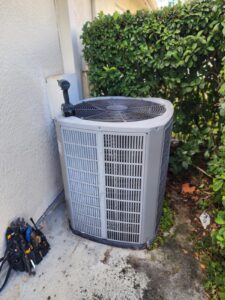
Signs You Need a Replacement
Recognizing the signs that you need an HVAC transformer replacement is crucial for maintaining the efficiency and safety of your heating, ventilation, and air conditioning system. A failing transformer can lead to a non-functional HVAC system, leaving you uncomfortable in your own home or potentially leading to more costly repairs down the line. Here are some key signs that indicate your HVAC transformer might need replacing:
1. HVAC System Failure
The most obvious sign is when your HVAC system stops working entirely. If there’s no response when you adjust the thermostat, and you’ve ruled out issues like a tripped circuit breaker or a dead thermostat battery, the transformer could be the culprit.
2. Burnt Smell or Visible Damage
If you notice a burnt smell coming from your furnace or air handler, it could indicate that the transformer is overheating and possibly burning out. In some cases, you might even see visible signs of damage or burn on the transformer itself, which is a clear indicator that it needs to be replaced.
3. Frequent Circuit Breaker Trips
When a transformer begins to fail, it might start drawing more power than usual, leading to frequent trips of the circuit breaker. If you notice that your HVAC system is causing the breaker to trip regularly, the transformer might be overloading the circuit.
4. Inconsistent HVAC Operation
If your HVAC system turns on and off unpredictably, fails to respond to thermostat changes, or behaves erratically, it could be a sign of transformer issues. An unstable transformer can provide inconsistent voltages, leading to erratic system behavior.
5. Unusual Noises
While transformers can make a low humming noise during normal operation, loud buzzing, crackling, or other strange noises can indicate a problem. These sounds might suggest that the transformer is struggling to maintain the correct voltage or is on the verge of failing.
6. Age and Wear
Like all components, transformers have a limited lifespan. If your HVAC system is old and the transformer has never been replaced, it might be worn out from years of use. Older transformers are more prone to failure and might need replacement even if they haven’t started showing other signs of trouble yet.
7. Physical Damage
Physical damage to the transformer, such as dents, cracks, or corrosion, can impair its function. This might happen due to accidents, pests, or just general wear and tear over time. If you notice any physical damage, it’s wise to have the transformer inspected and possibly replaced.
The Importance and benefits of a transformer replacement
Replacing a failing or inefficient HVAC transformer is not just about fixing an immediate problem; it’s an investment in the long-term performance and efficiency of your heating, ventilation, and air conditioning system. Understanding the importance and benefits of transformer replacement can help you make informed decisions about maintaining your HVAC system. Here’s why replacing your HVAC transformer is crucial:
1. Maintain System Efficiency:
A properly functioning transformer is key to maintaining the overall efficiency of your HVAC system. It ensures that the correct voltage is supplied to the system’s components, allowing them to operate as designed without overloading or underperforming. An efficient system not only provides better comfort but also consumes less energy, leading to lower utility bills.
2. Prevent System Failures:
A failing transformer can lead to complete system shutdowns. By replacing a faulty transformer promptly, you prevent unexpected failures that could leave you without heating or cooling during extreme weather conditions. This proactive approach can save you from discomfort and the potential costs associated with emergency repairs.
3. Enhance Safety:
A malfunctioning transformer can pose safety risks, including electrical hazards and the potential for fires. Replacing a damaged or failing transformer eliminates these risks, ensuring the safety of your home and family. A new, properly functioning transformer provides peace of mind, knowing that your system is operating safely.
4. Improve System Longevity:
When a transformer isn’t functioning correctly, it can cause undue stress on other components of your HVAC system, leading to premature wear and tear. By ensuring that the transformer is in good working condition, you help extend the lifespan of the entire system, avoiding costly repairs or replacements of other components.
5. Ensure Consistent Comfort:
An HVAC system with a faulty transformer can lead to inconsistent temperatures, poor response to thermostat adjustments, and generally unreliable performance. Replacing the transformer helps ensure that your system responds accurately to your comfort needs, maintaining a consistent and pleasant indoor environment.
6. Compliance with Modern Standards:
Over time, the standards and technology for HVAC systems evolve. Replacing an old transformer with a new one ensures that your system complies with current safety and efficiency standards. Modern transformers are often more energy-efficient and reliable than their older counterparts.
7. Cost Savings in the Long Run:
While there’s an upfront cost to replacing a transformer, the long-term savings can be significant. A more efficient system reduces energy bills, and avoiding emergency repairs or premature system replacement can save a considerable amount of money over time.
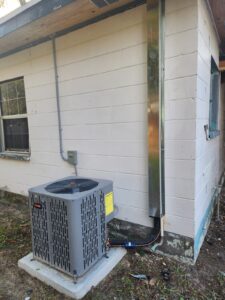
The Replacement Process
The replacement process of an HVAC transformer is a critical task that ensures the efficient and safe operation of your heating and cooling system. Understanding the steps involved in transformer replacement can help you recognize the importance of this process and what it entails. Whether you’re a homeowner looking to understand what a technician will do or a DIY enthusiast considering taking on the task, here’s a detailed look at the transformer replacement process.
Step 1: Identify the Need for Transformer Replacement
The first step in the transformer replacement process is recognizing the signs that you need a new transformer. As discussed earlier, these can include system failure, a burnt smell, frequent circuit breaker trips, or inconsistent operation. Once you’ve identified that transformer replacement is necessary, you can proceed with the following steps.
Step 2: Safety Precautions
Safety is paramount in any transformer replacement process. Before attempting to replace the transformer, ensure that the power to the HVAC system is completely turned off. This usually means switching off the circuit breaker that supplies power to the unit. Never attempt transformer replacement without securing the power source first.
Step 3: Accessing the Transformer
In the transformer replacement process, you’ll need to locate and access the old transformer. This typically involves opening the HVAC unit’s access panel. The transformer is usually found mounted inside the furnace or air handler. Once located, take a moment to observe how it’s installed, including the wiring and mounting position.
Step 4: Documenting the Wiring
Before removing the old transformer during the transformer replacement process, it’s crucial to document the wiring. Take a clear photo or make a detailed diagram of the wires connected to the transformer. This will be an invaluable reference when you install the new transformer to ensure all connections are made correctly.
Step 5: Removing the Old Transformer
Now, you’ll proceed with the actual transformer replacement. Carefully disconnect the wires from the old transformer, referring to the documentation you made to ensure you know where each wire should go. Once the wires are disconnected, unscrew or unmount the old transformer and remove it from the unit.
Step 6: Installing the New Transformer
With the old transformer removed, the next step in the transformer replacement process is to install the new one. Place the new transformer in the same position as the old one and secure it with screws or mounting brackets. Then, carefully reconnect the wires according to the documentation you made earlier. Double-check each connection to ensure it’s secure and correctly placed.
Step 7: Testing the New Transformer
After the new transformer is installed, the transformer replacement process is nearly complete. Turn the power back on to the HVAC system and test the operation. Adjust the thermostat and observe the system’s response. If everything is working correctly, the transformer replacement has been successful.
Step 8: Post-Replacement Checks
Even after a successful transformer replacement, it’s wise to monitor the system for a few days to ensure continued proper operation. Listen for unusual noises and observe the system’s performance. If any issues arise, revisit the connections and ensure everything is secure.
Choosing the Right Transformer
Choosing the right transformer for your HVAC system is a critical decision in the transformer replacement process. The right transformer ensures efficient operation, safety, and longevity of your system. Here’s a comprehensive guide to help you select the appropriate transformer for your HVAC needs.
1. Understand the Specifications:
- Voltage Rating: The transformer must match the voltage requirements of your HVAC system. Most residential systems require a transformer that can convert 120V or 240V to 24V. Check your system’s manual or consult with a professional to understand the needed voltage.
- VA Rating (Volt-Amps): This indicates the transformer’s capacity. It’s a measure of how much power the transformer can handle. A higher VA rating means the transformer can support a heavier electrical load, which is crucial if your system has multiple components or a larger blower motor. Common ratings for residential systems are 40VA or 50VA, but you should verify what your specific system requires.
2. Compatibility:
- Ensure the transformer is compatible with your HVAC system. This doesn’t just mean voltage and power capacity; it also includes physical dimensions and mounting type. The new transformer should fit where the old one was and connect the same way to the system.
3. Quality and Reliability:
- Opt for a transformer from a reputable manufacturer. A high-quality transformer might cost a bit more upfront, but it can save you money and hassle in the long run by lasting longer and preventing system failures. Read reviews and ask for recommendations from professionals.
4. Safety Features:
- Good transformers come with built-in safety features like overload protection, which helps prevent fires and other hazards. These features are particularly important in systems that are prone to power surges or other electrical issues.
5. Consult the Manual or a Professional:
- If you’re unsure about the specifications you need, consult the user manual for your HVAC system. It will usually list the requirements for a replacement transformer. If the manual isn’t available or you’re still unsure, don’t hesitate to contact a professional HVAC technician. They can provide advice on the right transformer for your system.
6. Consider Future Needs:
- Think about any planned upgrades to your HVAC system. If you’re considering adding more components or expanding the system, you might want a transformer with a higher VA rating to accommodate these future needs.
7. Warranty and Support:
- Check the warranty and support options for the transformer. A good warranty can provide peace of mind and protection for your investment. Support is also crucial if you encounter any issues during the installation or operation of the transformer.
Common Mistakes to Avoid
When it comes to transformer replacement in your HVAC system, being aware of and avoiding common mistakes is crucial for a successful and efficient process. Transformer replacement, when done incorrectly, can lead to a host of issues, from system inefficiencies to safety hazards. Here are some common mistakes to avoid during the transformer replacement process:
1. Ignoring Safety Protocols:
- Mistake: Not taking proper safety measures before starting the transformer replacement.
- Consequence: Risk of electric shock or causing further damage to the HVAC system.
- Avoidance: Always ensure the power is completely turned off at the circuit breaker before beginning any transformer replacement.
2. Incorrect Transformer Selection:
- Mistake: Choosing the wrong transformer for your HVAC system during the transformer replacement.
- Consequence: Potential system malfunction or inefficiency post transformer replacement.
- Avoidance: Confirm the voltage and VA rating requirements of your system before purchasing a new transformer for replacement.
3. Poor Wiring Connections:
- Mistake: Rushing through the wiring part of the transformer replacement.
- Consequence: Loose connections can lead to system failure or hazards post-transformer replacement.
- Avoidance: Carefully follow the wiring diagram and double-check all connections during the transformer replacement.
4. Overlooking System Compatibility:
- Mistake: Assuming any transformer will fit your system during the transformer replacement.
- Consequence: Incompatibility can cause system failure after the transformer replacement.
- Avoidance: Verify the new transformer’s compatibility with your specific HVAC model before the transformer replacement.
5. Skipping Manufacturer’s Instructions:
- Mistake: Ignoring the guidelines provided by the transformer’s manufacturer during transformer replacement.
- Consequence: Potential missteps leading to improper transformer replacement.
- Avoidance: Always read and adhere to the manufacturer’s instructions during transformer replacement.
6. Neglecting a Pre-Replacement Inspection:
- Mistake: Not inspecting the old transformer and surrounding components before transformer replacement.
- Consequence: Missing signs of other issues that could affect the new transformer post-replacement.
- Avoidance: Conduct a thorough inspection before the transformer replacement to ensure no other parts need attention.
7. Failing to Test After Installation:
- Mistake: Not testing the HVAC system immediately after the transformer replacement.
- Consequence: Unnoticed errors during transformer replacement could lead to system damage.
- Avoidance: Perform a comprehensive test of the system after the transformer replacement to ensure everything operates correctly.
8. DIY Without Proper Knowledge:
- Mistake: Attempting transformer replacement without the necessary skills or understanding.
- Consequence: Incorrect transformer replacement leads to potential damage and safety risks.
- Avoidance: If unsure, always seek professional help for transformer replacement to ensure safety and correctness.
Transform Your Comfort: Mastering HVAC Transformer Replacement with The AC Therapist
As we wrap up our comprehensive journey through the intricacies of HVAC transformer replacement, it’s clear that this process is more than just a technical task; it’s a step towards ensuring the longevity, efficiency, and safety of your home’s heating and cooling system. At The AC Therapist, we understand the importance of a well-functioning HVAC system to your comfort and peace of mind. That’s why we’re dedicated to providing you with the knowledge and services necessary to keep your system running smoothly.
Whether you’re facing the signs of a failing transformer, contemplating the right replacement, or looking to avoid common pitfalls, remember that you’re not alone. The AC Therapist is here to guide you through every step of the transformer replacement process. Our team of skilled professionals is equipped with the knowledge, tools, and dedication needed to ensure your HVAC system operates at its best.
So, when you’re ready to take the next step in home comfort and efficiency, remember that The AC Therapist is just a call away. Trust us to handle your HVAC transformer replacement with the care, precision, and expertise you deserve. Together, we’ll ensure that your home remains a sanctuary of comfort, no matter what the weather brings.

